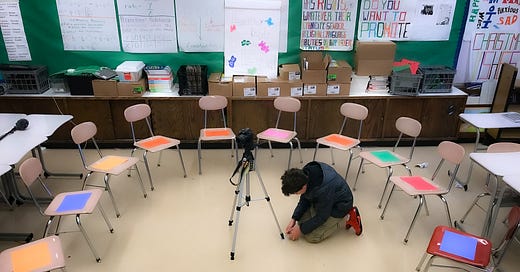Cultivating Inclusivity: Embracing Individuality and Neurodiversity in the Classroom
By moving away from learning experiences based on productivity, we can cultivate a sense of empathy, and collaboration among classmates, leading to a more fulfilling educational journey for all.
When I was in primary school, I was separated from my class due to my slower pace of learning, which was deemed to be hindering group progress. It left me feeling quite peculiar and isolated. I couldn’t quite comprehend why my classmates wouldn’t want to engage with someone who struggled academically. Consequently, during break time, I would observe from afar as other kids joyfully played soccer, engaged in conversations, and shared laughter.
My learning disadvantages compelled me to cultivate a keen sense of observation, analysis and, eventually, creativity. As a means to garner attention and recognition, I channeled my creative abilities. While I faced challenges in subjects like math, science, and language, it was primarily due to the way they were taught. The traditional teaching methods didn’t resonate with my learning abilities and hindered my progress. However, I found solace and a sense of accomplishment in nurturing my creative side. It became a refuge where I could excel and express myself in ways that the conventional subjects couldn't capture.
However, the damage to my social well-being had already been inflicted. No matter how creative I became, It couldn't fully compensate for the sense of being overlooked and excluded by my peers. I was perceived as peculiar, and even my mother couldn't provide a satisfactory explanation for it. I yearned to be seen and regarded as a normal boy, but that longing remained unfulfilled.
I learned to accept my circumstances and discovered the strength within me to accomplish things that many of my peers couldn't. Despite the challenges I faced, I pursued my passion for design and architecture, ultimately graduating as an industrial designer. Determined to broaden my horizons, I embarked on a journey from Argentina to Spain to pursue a master’s degree in visual culture. These experiences have shaped me into a resilient individual, ready to embrace new opportunities and overcome any obstacles that come my way.
In addition to reshaping the physical environment, my second intention as an educator was to utilize multimedia resources as a means for students to explore and embrace the uniqueness of each individual and the diverse ways in which we learn.
And then came the opportunity to teach. Initially, it was almost accidental when I found myself in a classroom filled with teenagers. By stroke of fortune, I was granted the chance to experience what it feels to be on the other side of the desk, in the role of an educator. As I embraced this new responsibility, my immediate instinct was to transform the classroom environment. I took the initiative to rearrange the desk, inviting the teenagers to form a circle, where everyone could sit on an equal level. This simple act aimed to foster a sense of inclusivity, open communication, and mutual respect among all participants.
In addition to reshaping the physical environment, my second intention as an educator was to utilize multimedia resources as a means for students to explore and embrace the uniqueness of each individual and the diverse ways in which we learn. By incorporating various multimedia elements, I aimed to create an interactive and engaging learning experience that celebrated our differences and highlighted the multiple learning styles present within the classroom. This approach allowed students to experiment, discover their own preferences, and appreciate the rich tapestry of perspectives and learning methods that existed among them.

The Bottom Line
By moving away from the standardization of learning experiences based on productivity, we can alleviate the stress experienced by our students. In doing so, we foster an environment that embraces individuality while promoting a collective learning experience, particularly for neurodivergent students. Recognizing that every student has unique strengths, challenges, and learning styles, we create an inclusive space where diverse minds can thrive. This approach not only supports the academic growth of each student but also cultivates a sense of acceptance, empathy, and collaboration among classmates, leading to a richer and more fulfilling educational journey for all.





